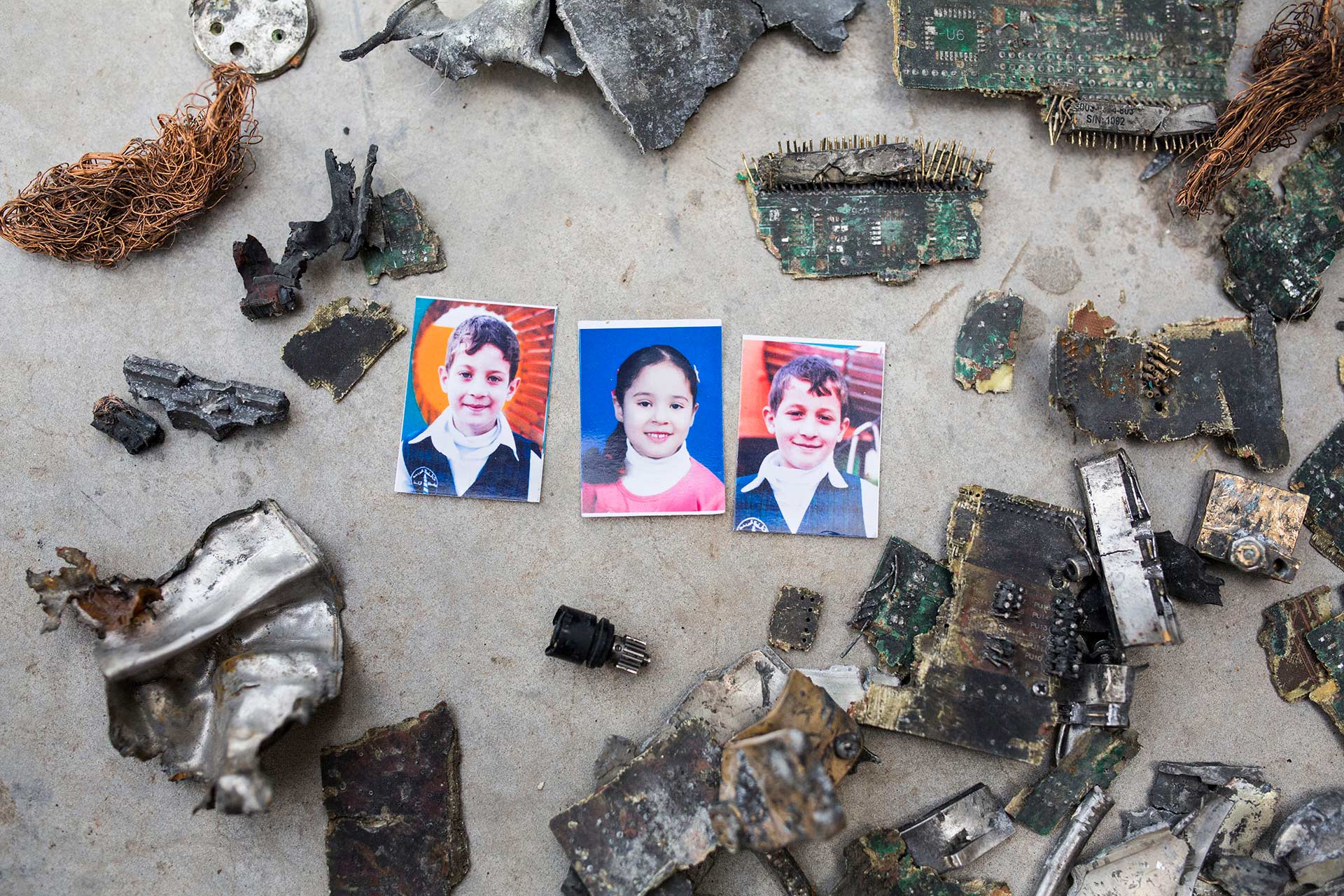This is Basel Shuheibar, 10 years old, just two months after the drone strike.
When he gets angry, Basel smashes things. Or slaps his sister. The sedatives doctors have him take have not eliminated the angry outbursts. When he eventually calms down, the headaches kick in.
The drone strike left him with serious head, arm and hand injuries. A chunk of his skull was missing. There was shrapnel lodged inside his head and throughout his body. He barely survived and lay unconscious for two days. Finally, Basel travelled to Germany to have the shrapnel removed from his head. His nervous system was damaged, and to fix his hand the doctors inserted metal plates to repair the bone.
When we visited him, a year later to the day, he looked slimmer than in the photo, but also less worn out. He still suffered from angry outbursts but they were becoming less frequent with time.
Basel didn’t talk much, but he wasn’t gloomy either. He actually smiled. He had spent months in Germany and Turkey, undergoing surgery on his arm and head. His mom says that yes, he is doing better, but he also suffers from the pain in his arm and reoccurring headaches. His body is still full of possibly carcinogenic shrapnel.
Like other children in Gaza who were traumatized during the war, he has been struggling in school; now concentrating for longer periods of time and memorizing things is much harder for him. Basel’s mother is doing all she can to help him: school is a must, and although for a few months the boy was not able to take notes with his injured hand, he still attended classes.
Basel says the nightmares that used to haunt him during the first months after the attack are gone now. He stopped avoiding people all together, but spending time with other kids is still a challenge. “Because of my injury, I get tired, I have headaches. And I’m afraid my head injury could reopen,” he explains. So, sometimes, he prefers to be alone.








